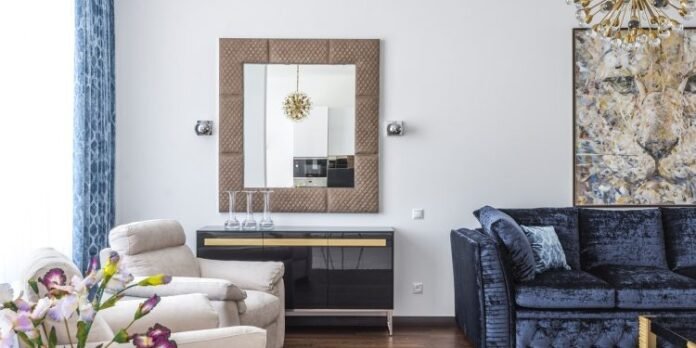A lot of small stuff must come together to create the ideal environment when creating a beautiful home. Achieving harmony, establishing a consistent theme, and ensuring that your furniture is the appropriate size can be the difference between a home you enjoy and one that doesn’t feel quite right.
Although interior design appears to be a task that you can complete on your own, several tiny elements must be considered when designing a room that can make or break your home! That’s why we are here to prevent you from making mistakes that might ruin your dream of having the perfect Pinterest-inspired dream home!
1. Not Having a Proper Plan
Starting a design project without a plan is similar to driving to an unknown location without first consulting a map. While not all design jobs will necessitate scale drawings and a comprehensive set of specifications, you should always create a few ground rules before you begin. Following a consistent design style and colour palette, regardless of the size of your project, will guarantee the area feels coherent.
2. Failing to Establish a Focal Point
A room with no focal point floats around, with no corner or scene to hold your attention for long. A focal point not only enhances the attractiveness of a room but also anchors it. A focal point is a spot from which all of your room’s activities emanate. In an open layout, a visually striking feature serves to centre the attention and make the area seem linked. A large piece of artwork, paneled walls, moving wallpapers, or a large indoor tree are all tried-and-true ways to establish a focal point in a room design.
3. Using the Wrong Size Area Rug
A rug is an essential component of your room’s décor. Getting it right can increase the attraction of the entire place. Choosing a rug that is too tiny is not only a fashion faux pas, but it also makes your home appear smaller and cluttered. Several easy design guidelines can help your carpets thrive in any space.
The first and foremost rule is to make sure it’s the right size. This means that rugs should be placed under the front half of every piece of furniture in the living room that rests on it.
4. Choosing the Wrong Size Furniture
Scale and proportion are the two most difficult aspects of design to perfection. Many people believe that if they have a large home, they can use large furniture. Similarly, if they have a modest home, they only can use small-scale furnishings. It’s fine to make a statement with a large-scale object in a small location. However, to avoid a crowded feeling in the room, balance it out with little or visually light items. The ideal area will be characterized by a variety of sizes, shapes and heights.
5. Choosing Paint Colours First, Then Furniture and Fabrics
Painting first is a common interior design mistake most of us make. Put down that paintbrush! First, choose the fabrics and primary textiles for the room, such as rugs and drapes. Why is this the case? Because it is simply easier to locate textiles we like and then paint them to match. While it is far more difficult to find a fabric that we adore and also happens to match the paint we already have on our walls.
6. Exposed Outlets and Cords
Keeping cords and wires off the floor keeps your space looking fresh and clean. An unattractive tangle of cords and wires can completely detract from a room’s charm. Although electrical lines are unavoidable, they can be hidden or tucked away. Running cables through the wall and out of sight is the easiest technique to hide them. This, however, is not always achievable. Alternatively, to hide cords, paint them the same colour as the wall.
7. Inadequate Lighting
The house may appear dark and cramped if there are few light sources on the ceiling. To create a well-lit room, use multiple levels of lighting at different heights, such as pendant lights on the ceiling, table lamps, wall lighting, floor lamps, accent lights, and under-cabinet lighting in the kitchen.
8. Over-Accessorizing
When decorating, buy only one or two standout pieces and a few contemporary items such as pillows and accessories. Smaller, less expensive things can be simply changed once they have outlived their fad stage. Remember, you’re designing a room, not opening a shop!
9. Hanging Art at the Wrong Level
People have a habit of hanging paintings much closer to the ceiling than they should be. This is one of the common interior design mistakes you must avoid. Artwork should be hung at eye level or lower. This differs from person to person, so use your discretion. However, it is preferable to hang on the lower side rather than the higher one.
10. Decorating Too Much
If you try to decorate every corner and wall in your home, you will create a claustrophobic environment. Instead of placing multiple little accent items, use huge statement-making accessories to establish a focal point.
With all of the factors involved in interior design, such as lighting, proper architecture, spacing, furnishing, and so on, it can become complicated. If you’re new to interior design, it’s unavoidable that you’ll make some mistakes. Contact a professional home decorator if all else fails and you are too overwhelmed with all of the design ideas and complications! You can find a good number of skilled home interior designers to help you accomplish your dream home—without all of the blunders.
Recommanded:

